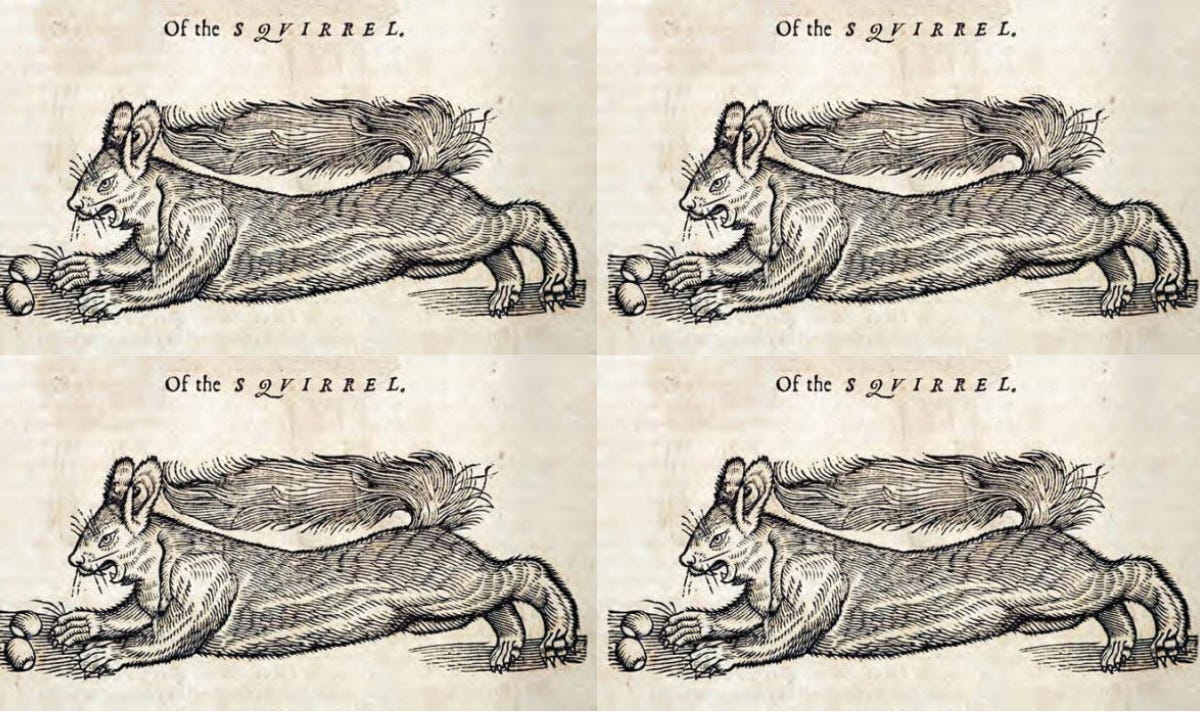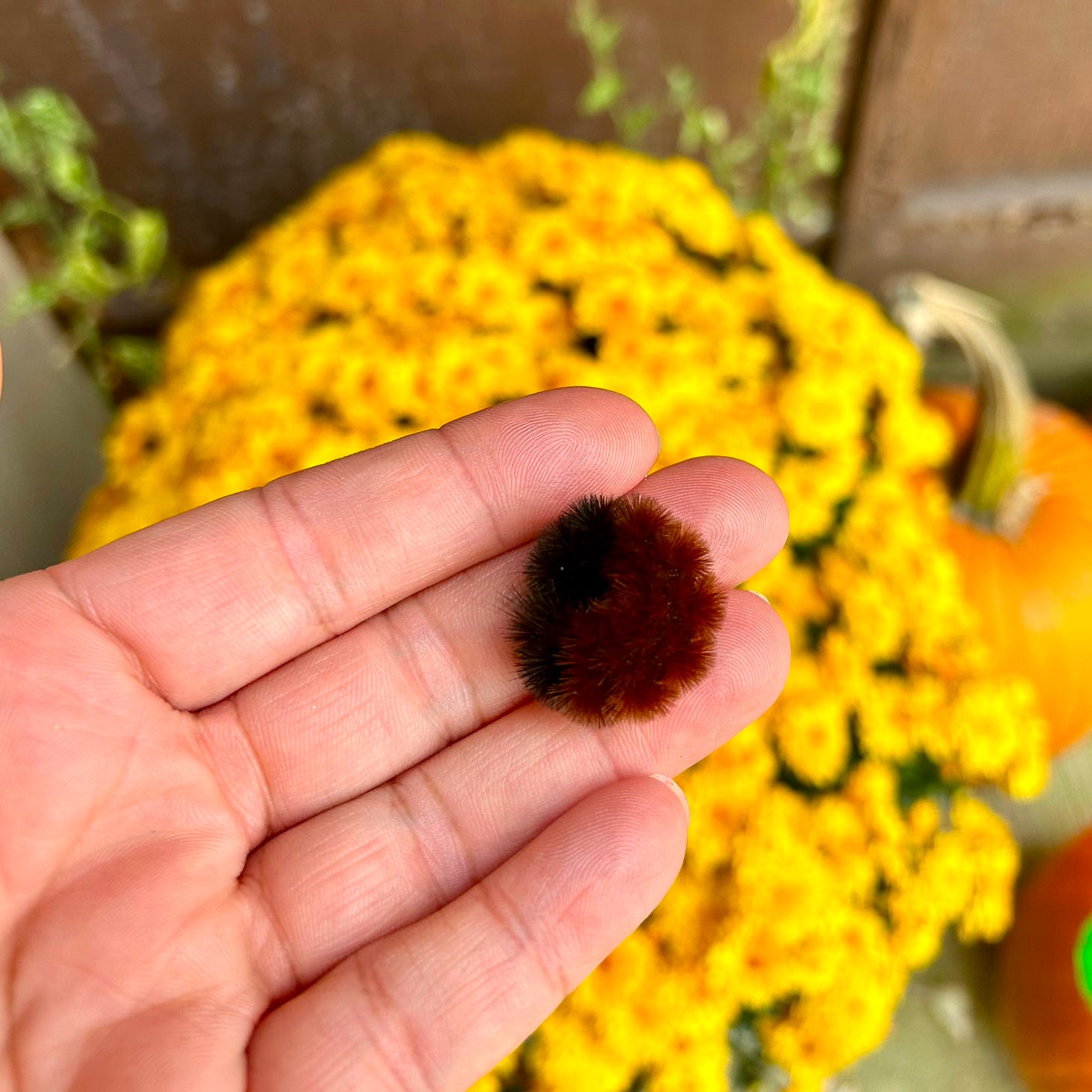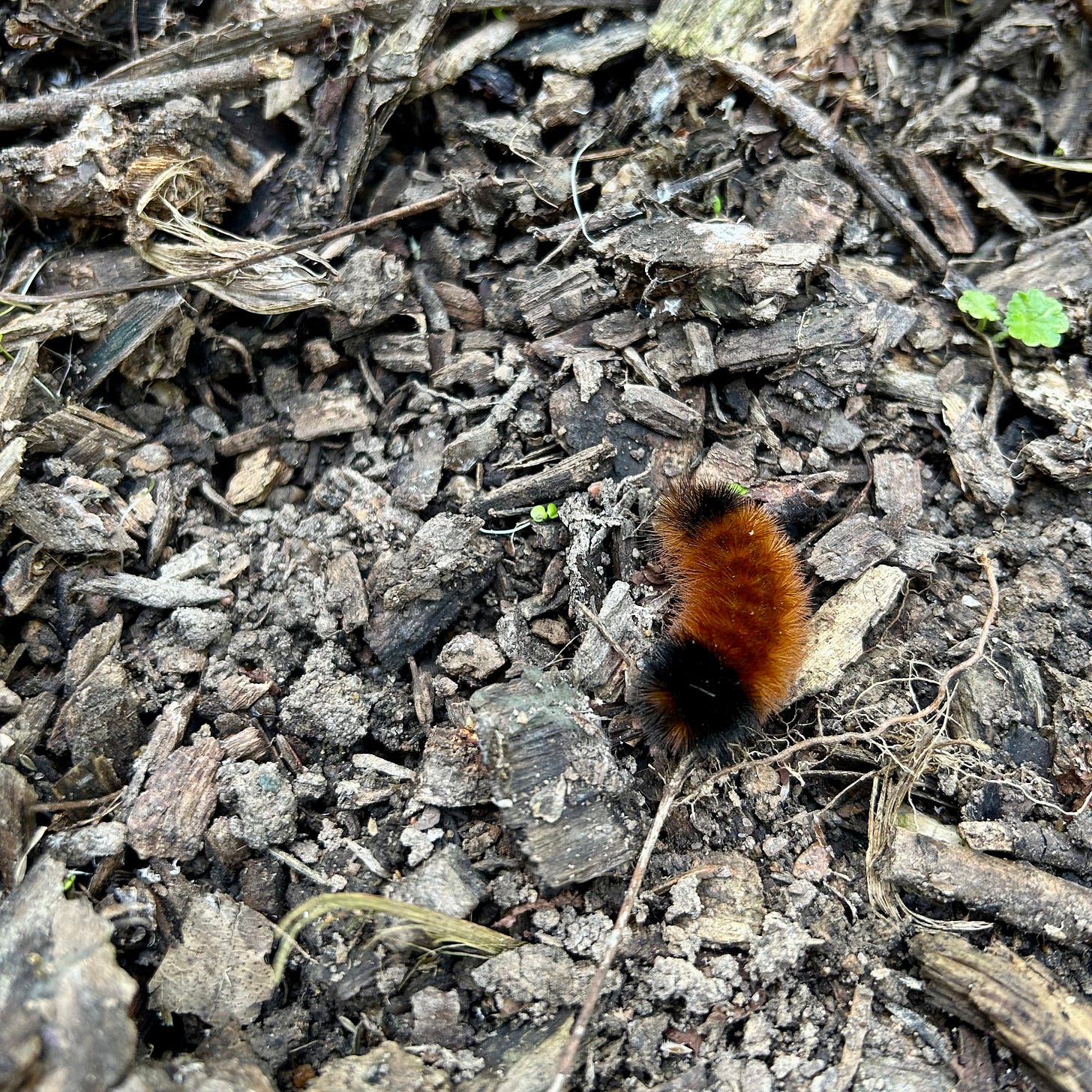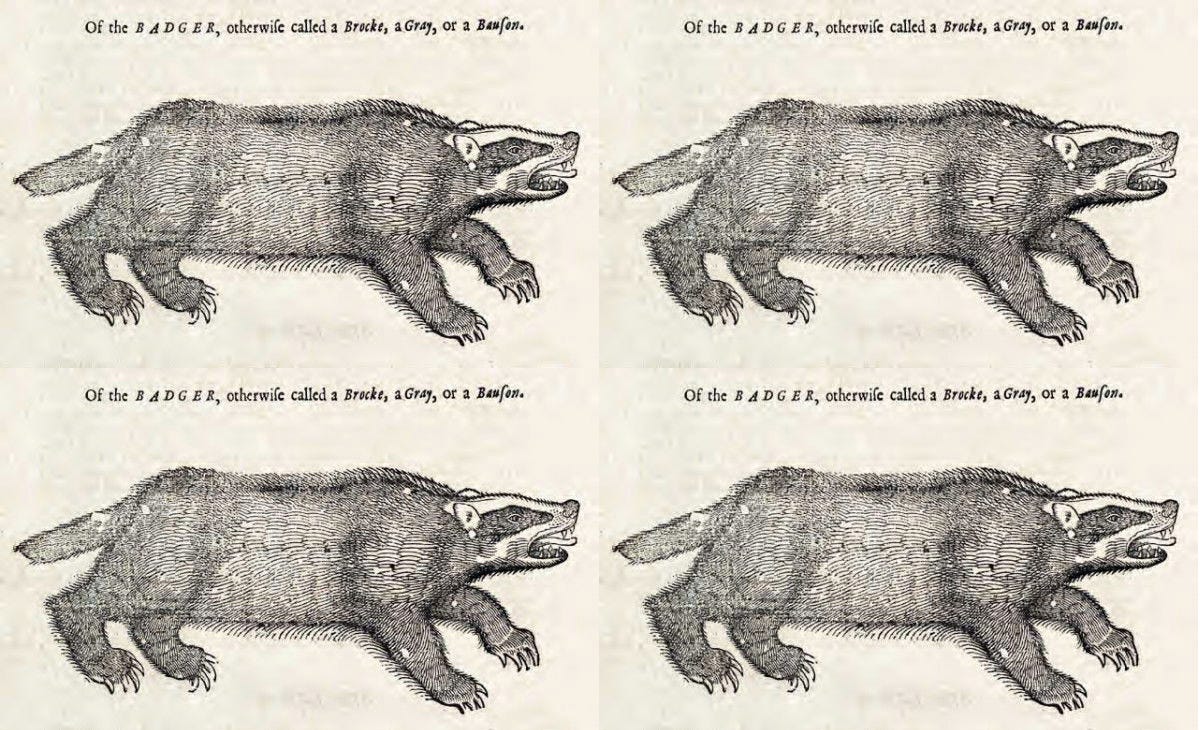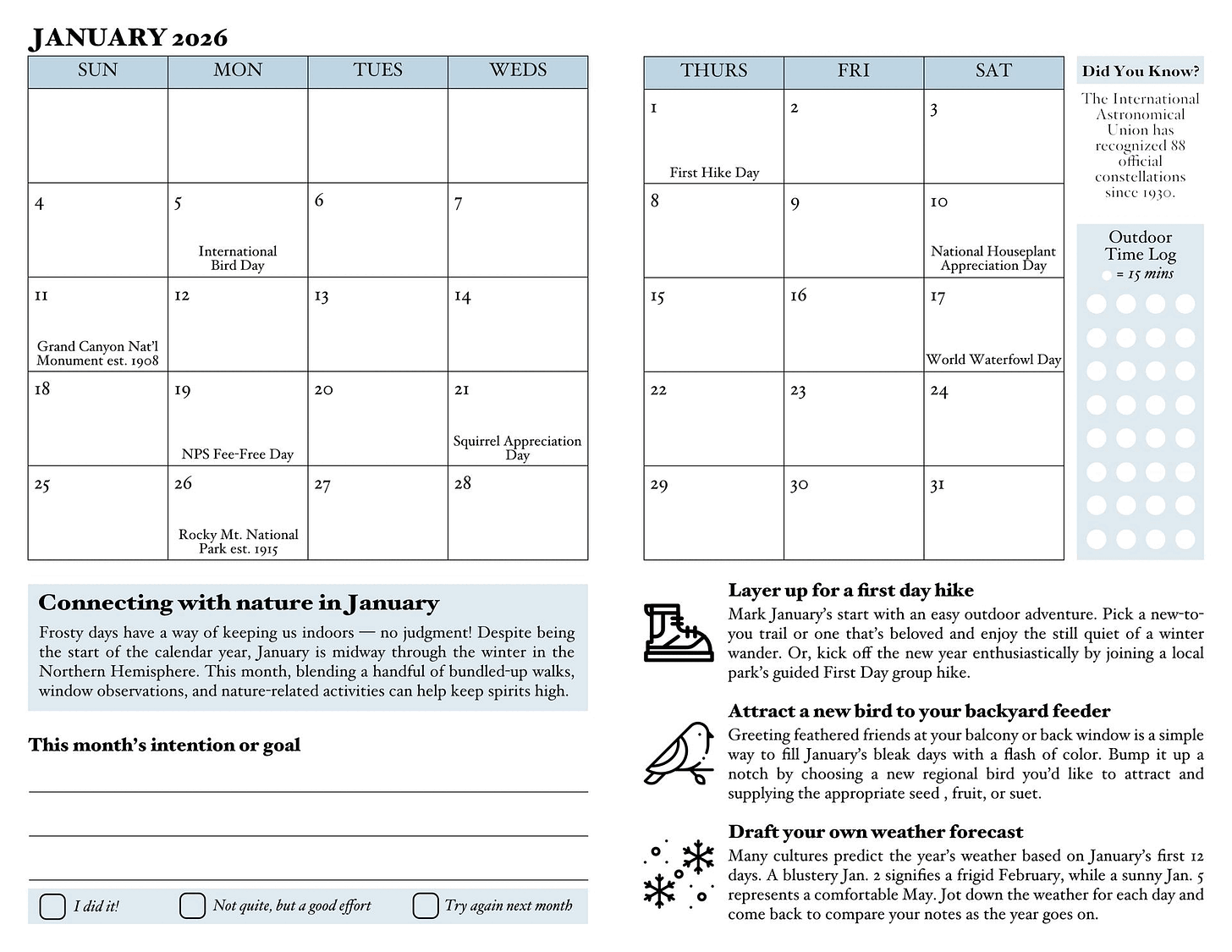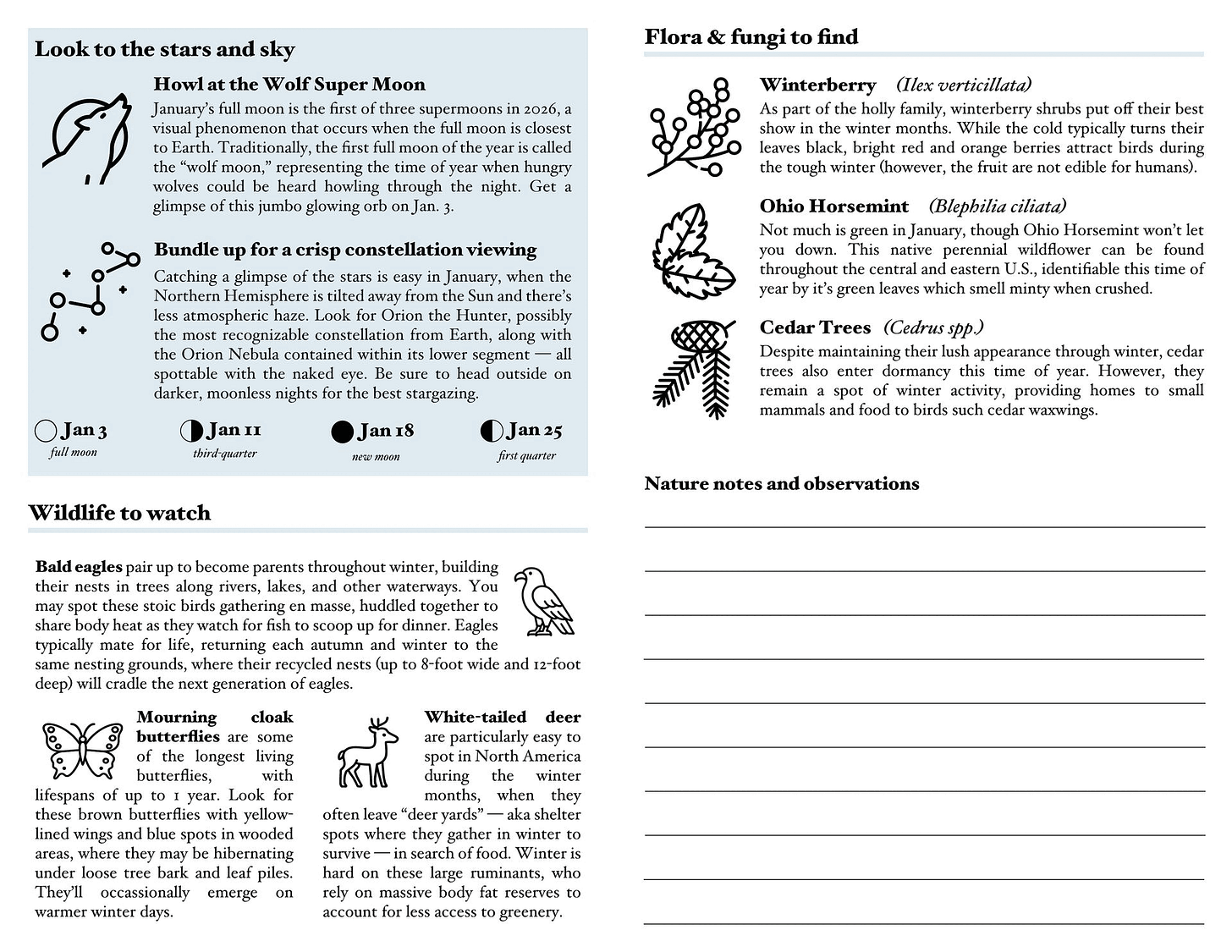October 2025: Ye Olden Autumn
It feels like we’re going back in time... why not lean into it?
In this month’s issue:
The leeches are hungry, m’lords and ladies — here’s where to find them
How to win (crow) friends and influence… more crows
Announcing the official Outdoor Humans Nature Journal for 2026!
Plus a few other nature notes.
October has rolled around and while the outside is slowly becoming a glorious and crunchy blaze of crimson and ochre, the general state of politics and American society is somewhat detracting from the best season of the year. I’m overwhelmed… are you?
As of late, I’ve found when the world feels chaotic, sometimes the only response is to be playfully unhinged. For me, it feels that the current timeline has been thrown in reverse. Fine. If we’re going back in time, why stop at a few decades? A century? No, let’s step back into the 1600s this month for a little puritanical nature cosplay.
This month’s Outdoor Humans is silly, and for good reason. Let a little revelry in the ridiculous take you on an 17th-century inspired side-quest. This month, we’re secretly speaking to crows and hunting for leeches. Care to join? Say yes or else you’ll end up in the stocks.
Become a Weather-Predicting Crone
The National Weather Service (NWS) has been around longer than you may realize, dating back to February 1870. At the time, President Ulysses S. Grant signed into law the first iterations of the department modern forecasters rely on, with the aim of collecting weather data from military stations and other spots around the country. Fast-forward to 2025, when political mischief has crumbled much of the government department that alerts us to dangerous conditions and sunny days alike.
Without this information, how are we to know how much wool to card for the impending winter or how many hard squash to pack into the larder? Perhaps we shall look to the worms.
Americans have been observing woolly worms since the colonial era, using them as weather prediction tools. Is this legit by modern standards? Probably not, yet we currently exist in a nonsensical society, so get with the vibe. Not to mention, woolly worms are fascinating insects in their own right.
Worms? Ye Must Be Mistaken
Whether your waggling tongue calls them woolly worms or bears, I have to break it to you: these fuzzy critters are neither. They’re caterpillars, a juvenile form of the Isabella tiger moth (Pyrrharctia isabella).
While typically seen in autumn, woolly worms are active most months of the year. In spring to early summer, woolly worm eggs hatch and transform into caterpillars, feasting on all the greenery they can find before building their cocoons and transitioning into moths. That first generation lays eggs in late summer and early autumn, which quickly grow into the caterpillars we humans see wiggling about in cooler weather.
The second group of woolly worms gets the unfortunate responsibility of surviving through winter’s harshness so they can lay spring’s eggs. And these little critters are amazingly equipped to do so. Surely, the sweater-like hairs keep them warm from December through April, right? Not really. Woolly worms produce a substance called glycerol, a natural version of antifreeze. This chemical allows them to safely hibernate under rocks or tree bark, weathering temps as low as -90° Fahrenheit. Their faux fur, called setae, helps the caterpillars freeze slowly so they can withstand the temperature drop and reduces damage from thawing and refreezing as temperatures swing up and down throughout the season.
Move Over, Punxsutawney Phil
How woolly worms became the prognosticators of winter weather isn’t clear, though the myth got something of a second life in the late 1940s. Dr. Howard Curran, then curator of entomology for the American Museum of Natural History, ran a tiny study in 1948 featuring a mere 15 woolly worms. His wintertime predictions picked up press coverage, and for about a decade after, Curran’s annual autumnal trek up a New York mountain to observe woolly worms was a popular newspaper feature.
Today’s scientists point out those limited sample sizes weren’t large enough to prove (or disprove) the caterpillar myth. Like all things in nature, woolly worms and their patterns have incredible variability — no two caterpillars are alike, even in the same season. Not to mention that not every fuzzy-looking caterpillar is an Isabella tiger moth — some similar species are entirely black, yellow, or white, which can skew the results. Getting an idea of whether or not these critters can really predict weather would mean collecting hundreds to thousands for observation each season, which sounds cute but also tedious.
Still, I think there’s something good-natured and fun about asking woolly worms their thoughts on the incoming cold season — we do the same each spring with a giant rodent, after all. Here’s how you can interpret the little fuzzy caterpillars you find in your habitat:
Look at the colors: Isabella tiger moths will have black and rust-brown bands of setae. Black supposedly indicates severe weather, while brown represents mild conditions ahead.
Observe the placement: Isabella tiger moth caterpillars have 13 body segments, which humans have interpreted as being one for each week of winter. A thicker brown stripe suggests more weeks of calm weather, while caterpillars with more black segments predict a harsher winter ahead. If you really want to go all in, you can use a magnifying glass to get a close look at each body segment to make your weather predictions.
Return your new friend to a safe spot: Woolly worms are lovely to interact with (they don’t bite or sting) but like all living creatures deserve kindness and respect. Be sure to return any you capture to a safe place near a tree or rock where they might burrow and rest for winter. Come spring — should you make it through a dark winter without contracting scurvy or typhus — you may just see them again, albeit in fluttery yellow suits.
🪦Wander wistfully through an old cemetery. Last fall, author Bess Lovejoy spoke with Outdoor Humans about the importance of spending time with nature in a spot many avoid for fear of catching a fright. Check out her suggestions for a fine stroll among the headstones.
🍁Make a leaf crown. It may not be gold or glittering, but a leaf crown can make you feel like the king or queen of your autumnal adventure.
🐦⬛Befriend a crow. Fear not the squawks of crows, for these sable-winged corvids are incredulously intelligent and fascinating to watch — even if superstition labels them carriers of bad news and misfortune. With a little patience, observation, and a few offerings of unsalted peanuts, you may just find yourself a new familiar.
🐍 DeKay’s brownsnakes are slipping by. While they typically mate in spring, DeKay’s brownsnakes sometimes get a second wind for amorous congress in autumn. Watch for these miniature snakes along sunny trail spots, where they spend this time of year hunting slugs and earthworms before slumbering through winter. The species is named for doctor and naturalist James Ellsworth De Kay (1792-1851), the first to collect this species.
🩸 Leeches are in search of a last meal before their winter nap. October has remained warmer than normal for much of the U.S., which may incline you to slip off your shoes and wade through a creek one last time. Do so with care, for leeches are about in muddy shallow sections, preparing for hibernation. As temperatures cool, these parasites burrow deep into mud to stave off winter’s chill. So if you need a few for your apothecary, now would be a good time to set out with a jar (just kidding — please leave the leeches outside).
🦋 Monarch butterflies are nearly finished with their autumnal migrations. Butterflies and their flittering flights have long symbolized rebirth and hope, and during this time of year you may catch a last glimpse of straggler Monarchs completing their journeys south to Mexico. Have no despair; their departure isn’t an omen for the hard times likely ahead, but perhaps something brighter. For if delicate Danaus plexippus can travel up to 2,800 grueling miles to warmer winter spots, we can get through hard things, too.
Preview: The Outdoor Humans Nature Journal!
I’ve hinted at a big upcoming project in the past few newsletters and it’s finally time to share with you what I’ve been working on: the official Outdoor Humans 2026 North American Nature Journal!
When I started writing Outdoor Humans, my goal was to share my love for being in nature and hopefully convert you to being an outside person, too. This journal is meant to help you find your own path through the woods with prompts that guide you to intentionally connect all year long.
Each month features specialty content separate from what appears in the free Outdoor Humans newsletter. You’ll find:
A monthly calendar with nature-focused holidays and happenings, plus space to record your own daily observations
Season-specific nature notes that encourage you to observe wildlife, get up close with plants, and find tasty foraging treats
Monthly ideas for connecting with the natural world — including indoor activities for those dark and frosty winter days
Journaling spots to recount walks and hikes, critter encounters, and other curiosities witnessed during your outdoor explorations
A simple time tracker that helps you visualize just how much time you’re really spending out there
Sounds intriguing, right? Good thing preorders for the Outdoor Humans 2026 North American Nature Journal open November 1, 2025!
You may have noticed that unlike some newsletters, Outdoor Humans does not require you cough up coins from your coffer — and that’s on purpose. I started this tiny publication because I truly enjoy experiencing and writing about nature, and hope that inspires you to see the value of the world around us.
There are already so many barriers to outdoor recreation — finding the time, lack of accessibility to green spaces, the cost of a many outdoor hobbies — and I don’t want my newsletter to contribute to that.
If you’ve ever been interested in supporting the real-life human behind Outdoor Humans, ordering your copy of the 2026 North American Nature Journal is a fantastic way to do so. Each newsletter is written by me (Nicole Garner Meeker), with no AI whatsoever.
Preorders begin with November’s issue drop and will ship out in early December, making this journal a great gift to share with the person you really want to hike, paddle, or bird watch with next year.
That’s it for this month’s edition of Outdoor Humans. As always, keep thy wits about thee and go outside, heathens.
Nicole Garner Meeker
Art Notes: This month’s feature art of “Badger” and “Squirrel” comes from The History of Four-Footed Beasts and Serpents, by Edward Topsell, published in 1658. His three-volume tome includes woodcut printings of real and mythical creatures with intriguing anthropomorphized or entirely odd descriptions of species behavior, such as hedgehogs enjoying wine and apes being afraid of snails. It should be noted Topsell was not actually a naturalist but a cleric who mostly wrote about religion… which could explain a lot.
Have a nature question? Your inquiry may be published and answered in a future issue of Outdoor Humans.
Have you subscribed? Clickity click, my friend. Or, share with a friend who needs to go outside and touch grass.



